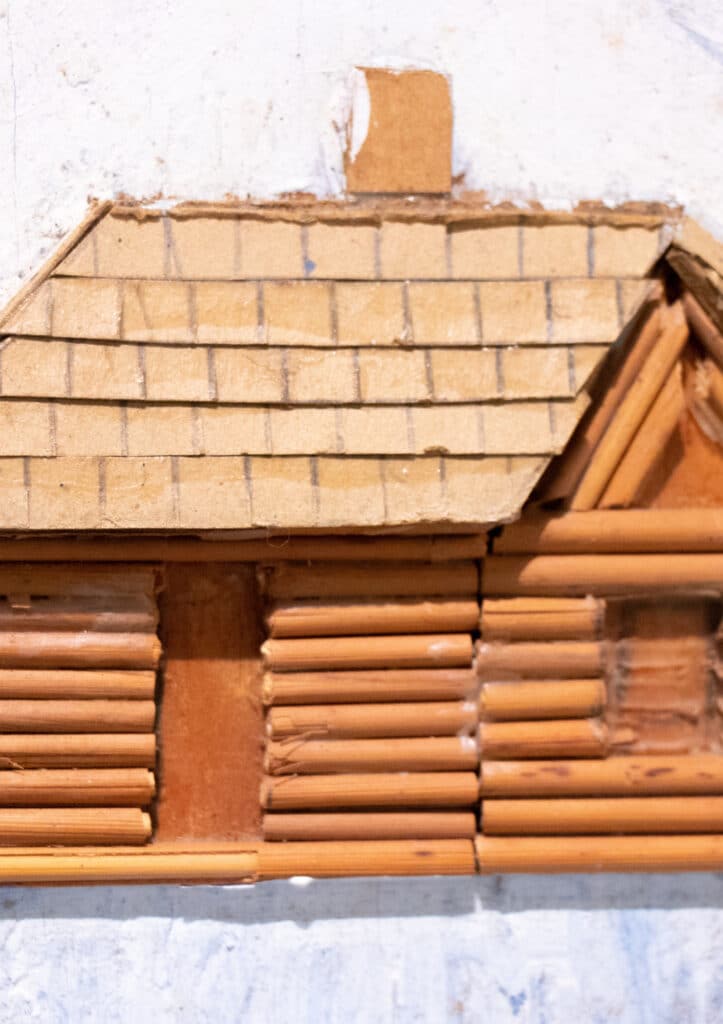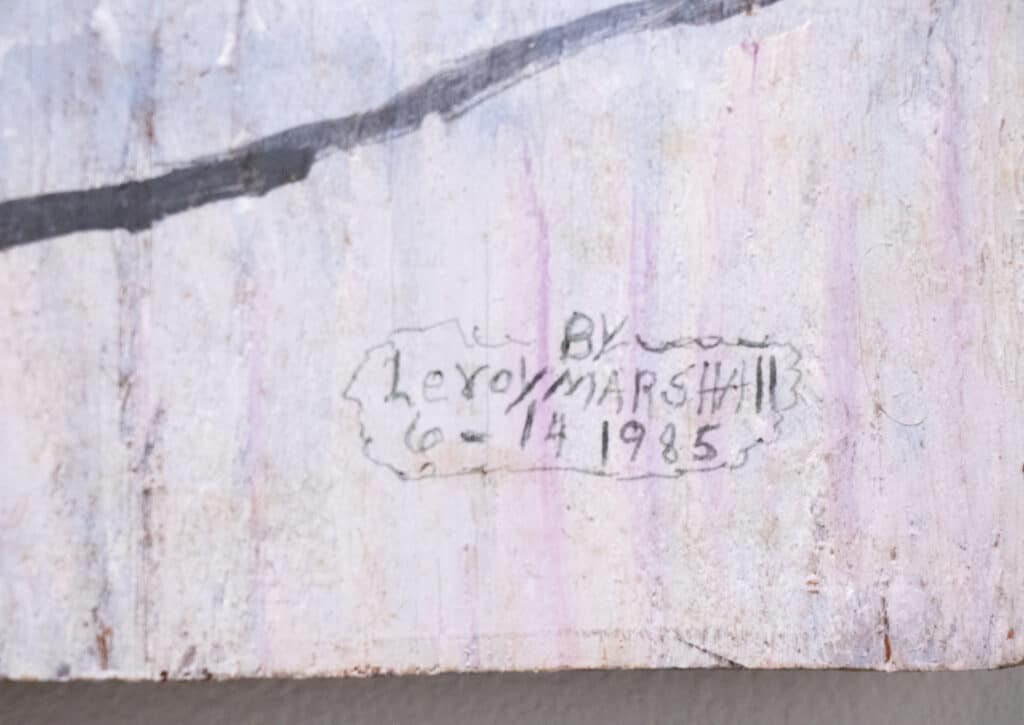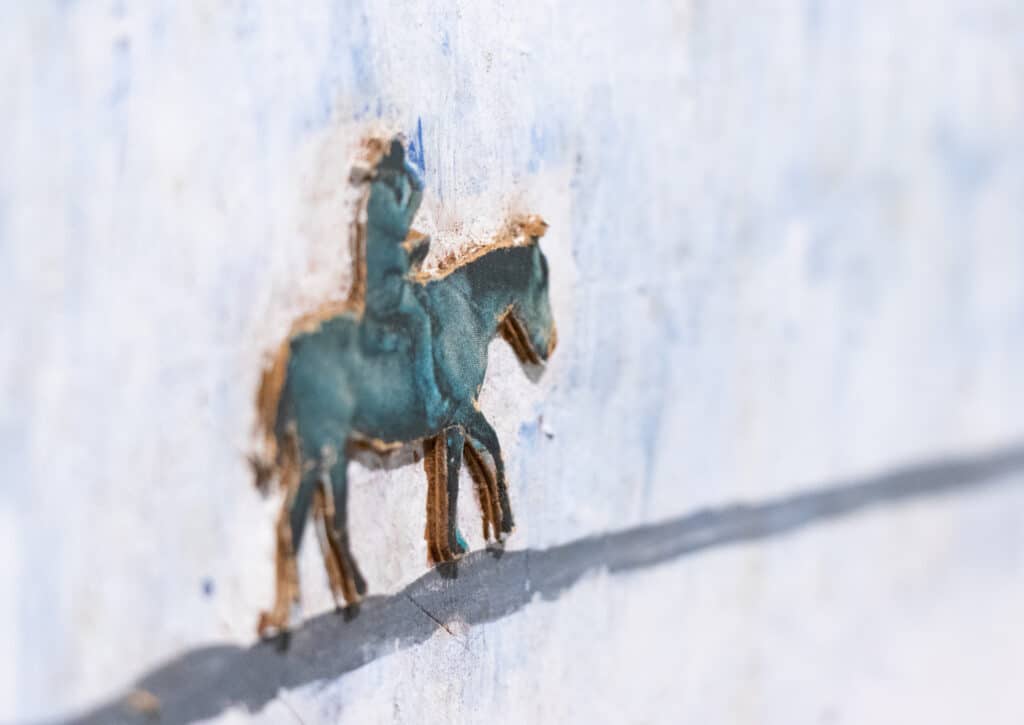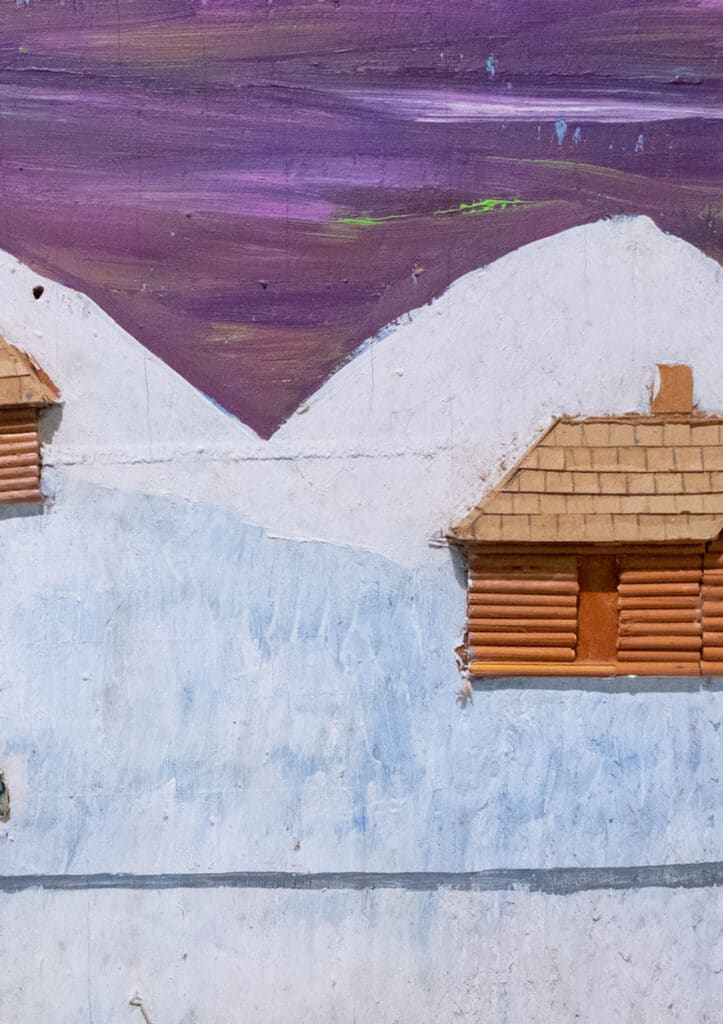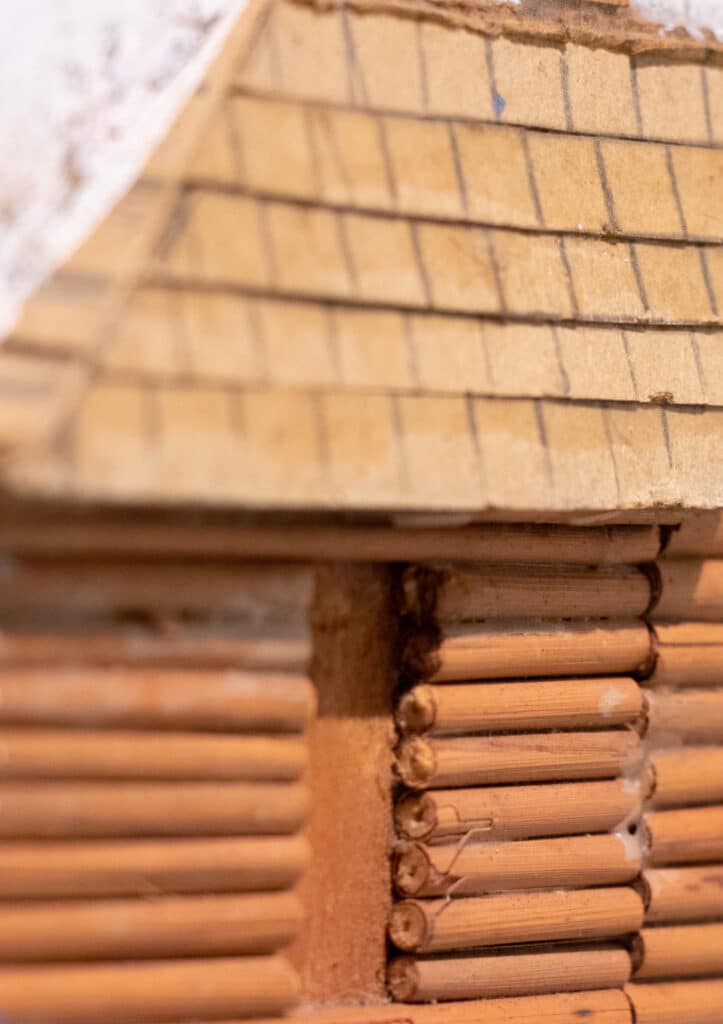about the work
This mixed media composition is the only one of Marshall’s pieces in SAM’s collection that depicts a human figure. The tiny cowboy and horse, cut from an image printed on cardboard, measure only one and a half inches tall. They travel across the wintry scene on a road, marked by a dark grey line cutting through the snowy white and blue landscape. A pair of three-dimensional log cabins, made of thin reeds and precise cardboard shingles pasted to the painting, sit in the midground; three white hills in the background are set against a vibrant purple and green sky, suggesting a polar aurora.
This composition quickly prompts a narrative: where is “home” to this lone cowboy? To which of the log cabins is he heading? Neither cabin seems to have a pathway for the cowboy to divert from the main road. Are these twin cabins but a landmark on the way to a “home” outside of the composition, beyond the thin grey line? How did a cowboy end up far enough north to see the aurora borealis? What narrative can you craft from this piece?
about the artist
Leroy “Art” Marshall was a self-taught artist who lived in Gaffney, South Carolina. A gun violence incident in 1966 caused Marshall to become paralyzed from the waist down; over 150 operations and a series of following health issues led to one leg being amputated in 1980.
Marshall turned to making art as a way to pass the time in the hospital, using any and all materials brought to him by friends, family, and nurses. He was inspired to create an image of the farmhouse across the street from his home, which started his beloved series of mixed media cabins, which he called “three dimension pictures.” With each piece, he experimented with new techniques, such as how to layer small wood chips as shingles, or using crushed stones and gravel for textural chimneys. “I spend about five or six hours on each one,” he said, “and I don’t know how many I’ve given away over the years.”
Marshall’s art was championed in Spartanburg by art teacher and fellow artist Doris Turner, who encouraged the Spartanburg Arts Center to host a solo exhibition of his work in September 1986. Marshall attended a reception in his honor and sold more than a dozen pieces during this show. His untimely passing in 1988 cut short his blossoming art career.
In addition to the Spartanburg Art Museum’s Permanent Collection, Marshall’s work can be found in the State Art Collection.
